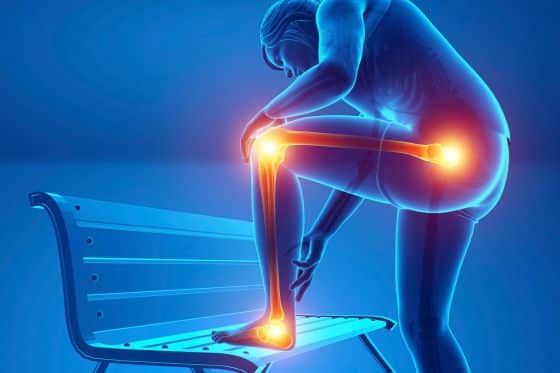If you have ever felt tingling, heaviness, or an unexplained sense of weakness in your lower back, legs, or feet, you are not alone. Many people reach a point where they start wondering how to better support nerve health so they can stay active, steady, and confident as they move through life.
The lower back, legs, and feet play a major role in balance, posture, and everyday comfort. When the nerves in these areas are not working as smoothly as they should, simple things like standing up from a chair, climbing stairs, or walking for long distances can begin to feel like a challenge.
The good news is this. There are natural ways to support the body and encourage healthier movement patterns, circulation, and mobility. With the right approach, you can create an environment where your nerves feel supported, your muscles stay strong, and your body feels more balanced and capable each day.
Let us explore gentle, practical steps you can begin using right away to support nerve health in your lower body.
Why Nerve Health Matters for Your Lower Back, Legs, and Feet
Nerve health is about more than avoiding discomfort. It is also about feeling connected to your body, trusting your movement, and staying independent as you age.
The nerves in your lower back send signals to your legs and feet that help you walk, stand, balance, and react to the world around you. When these pathways are working well, movement feels natural and fluid. When they struggle, your body may send signals like tingling, numbness, or weakness to get your attention.
Supporting nerve health naturally is about understanding your body, giving it what it needs, and staying consistent with movement and recovery routines.
Nerve Health and Movement: Gentle Ways to Strengthen Your Foundation
Movement is one of the most powerful ways to support nerve health. You do not need intense workouts or high impact routines. Instead, slow, steady, intentional movement can help your body wake up nerve pathways and build strength from the inside out.
Try adding these into your routine:
- Soft stretching to maintain flexibility and support blood flow
- Gentle strengthening exercises to support the muscles that protect your spine and joints
- Walking to encourage circulation in the legs and feet
- Balance exercises to keep your nervous system alert and engaged
Every movement does not need to be perfect. The goal is simply to keep sending healthy signals through your body, reminding your nerves and muscles how to work in harmony.
Nerve Health Through Posture and Alignment
Posture is not about standing stiff or holding your shoulders back. It is about learning to align your spine so your body can move naturally and your nerves have space to function well.
When your posture supports your spine and hips, nerves in the lower back have more freedom to communicate effectively with your legs and feet.
Think about:
- Keeping your weight balanced between both feet when standing
- Keeping your ribs relaxed and stacked above your hips
- Sitting tall with your feet grounded and your hips supported
Small adjustments can offer big benefits when your goal is to protect nerve health and stay mobile.
Nerve Health and Circulation: Keep Blood Flow Moving
Good circulation plays a key role in nerve health. When blood flow is strong, your nerves and muscles receive the oxygen and nutrients they need to stay responsive and supportive.
Some simple ways to support circulation include:
- Light daily movement
- Elevating your feet periodically
- Massaging the lower legs or using self-release tools
- Breathing deeply to increase oxygen flow
Even a few minutes a day can help you feel more connected to your body.
Nerve Health and Mind Body Awareness
Your brain and nervous system are partners. When you slow down and move with intention, you help strengthen the mind body connection that supports balance, strength, and coordination.
Practice:
- Breathing steadily while you move
- Noticing how your body feels, instead of rushing
- Giving yourself time to warm up and cool down
Connection is powerful. When your mind and body communicate clearly, movement begins to feel easier and more secure.
Nerve Health and Supportive Habits
Consistency is key when caring for nerve health. Small daily habits can make a meaningful difference over time. Think about:
- Drinking water throughout the day to support tissue health
- Nourishing your body with balanced meals
- Taking breaks from prolonged sitting or standing
- Prioritizing rest so your body can recover
You do not need to overhaul your lifestyle overnight. One supportive step at a time is enough.
You Do Not Have to Navigate Nerve Health Alone
If you have been noticing changes in your lower back, legs, or feet, and you are unsure where to start, you are not alone. Many people feel unsure about nerve health, and it can feel overwhelming trying to sort through information on your own.
The most important thing to remember is this. You do not need to figure it out by yourself. Support and guidance can make all the difference in helping you feel confident, strong, and in control of your body again.
Want Personal Guidance? Let’s Connect
If you are curious about how to support nerve health in a way that fits your unique body, we invite you to connect with me. We offer a free discovery visit where we can talk about what you are experiencing, explore gentle strategies that may help, and decide whether working together is the right fit.
This is a friendly, no pressure conversation designed to help you take the first step toward feeling more comfortable, balanced, and confident in your movement again.
Call 603-382-3336 or click here to book your free discovery visit and begin your path toward better nerve health and stronger movement from the ground up.
You deserve to feel supported every step of the way. Let’s take this journey together.
More Free Resources:
Read our blog – Neuropathy Relief: Natural Ways to Ease Nerve Pain Without Medication – We Got Your Back PT, Pilates & Wellness
See where we are located – Google Maps
Learn more about our membership – doctami.com/membership

